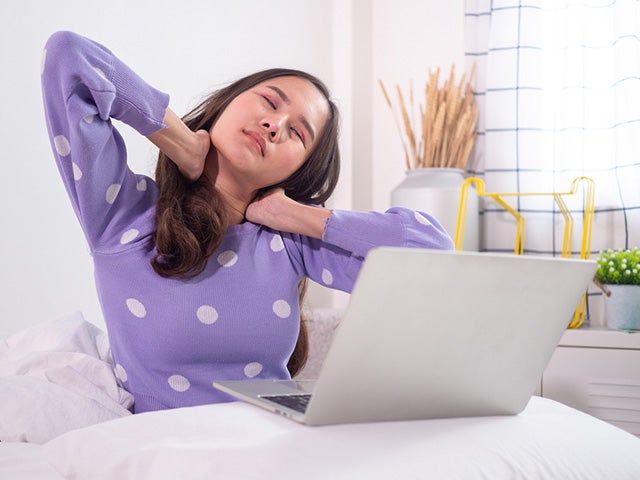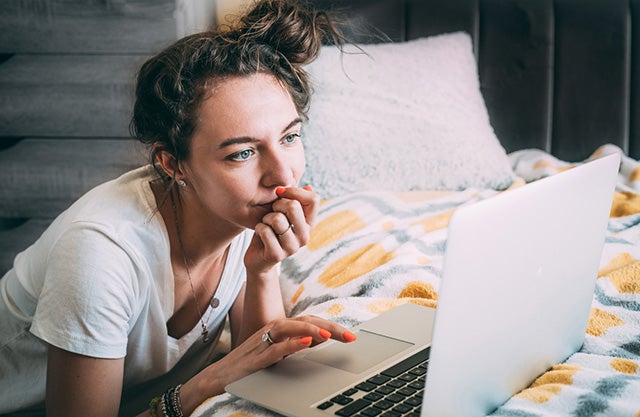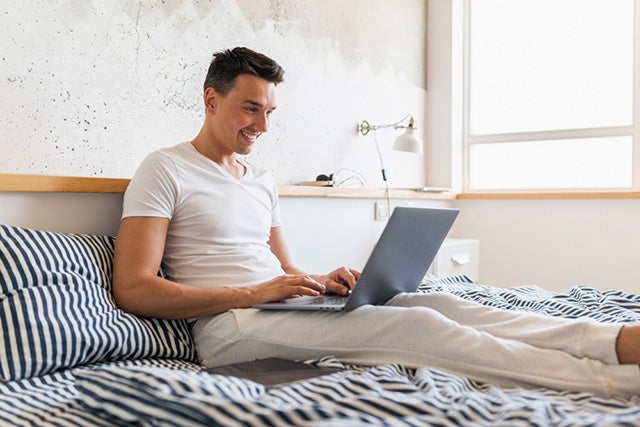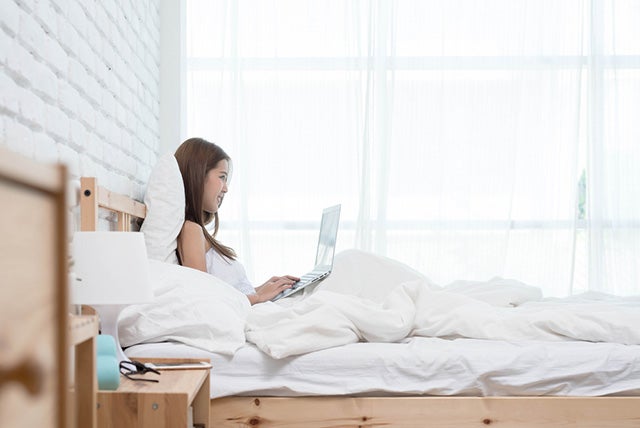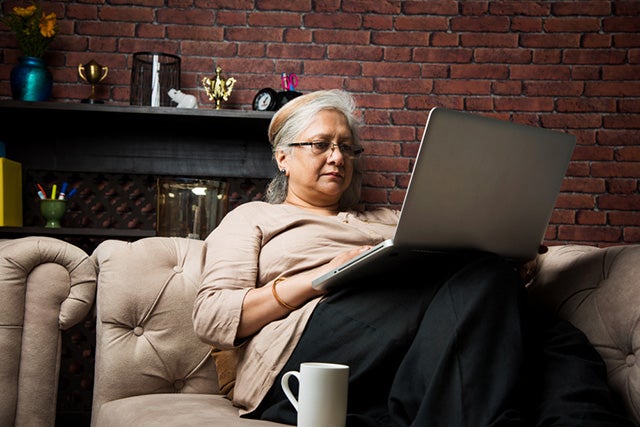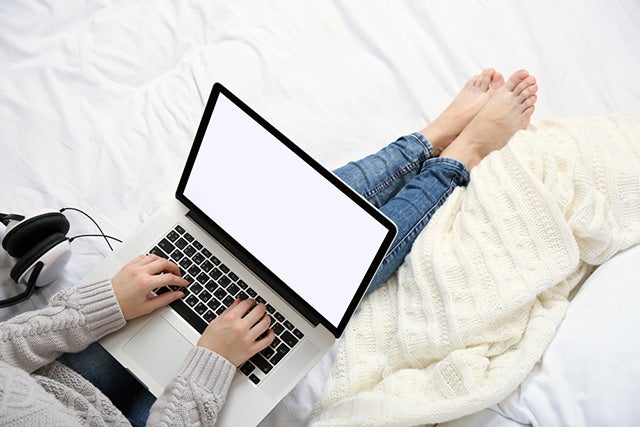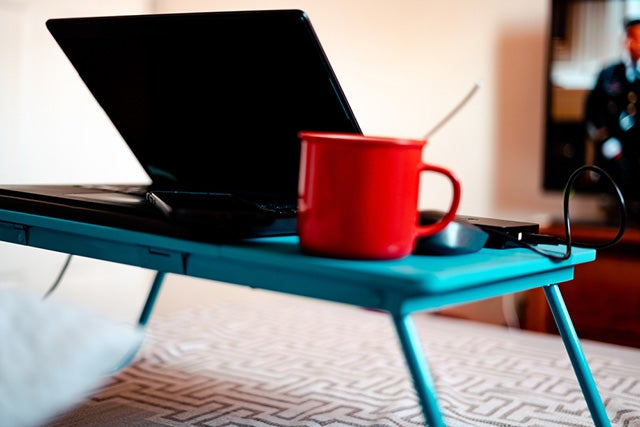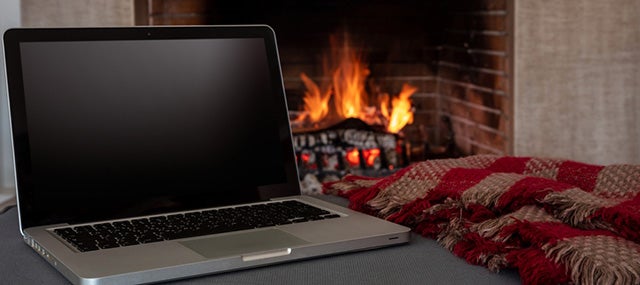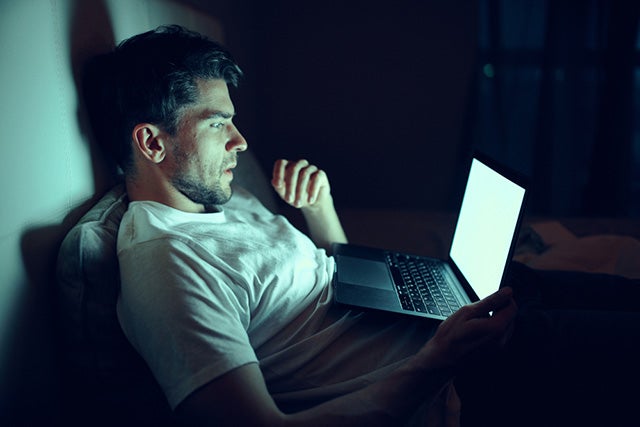Do you hear that? It’s my spine cracking when I straighten after hunching over my laptop all day.
If you’re like me, you have no idea of how to sit with a laptop without your spine protesting. Lucky for both of us, this article will help with that. Let’s discuss all the ways not to sit with a laptop in bed and how to properly pull it off so your spine will thank you later.
You may want to check out: Best Lap Desks
Should You Sit in Bed with a Laptop?
This depends on you and how you sit. If your posture is poor, your spine will undoubtedly pay for it. However, if your back is straight, there’s no harm in it. Of course that’s easier said than done, since we automatically hunch over after a while.
Keep an eye on that, your back will thank you as you age.
Another thing to consider is how likely you are to fall asleep. If the likelihood is high, make sure your laptop won’t fall and the screen is set to turn off after a while. This saves the battery and could potentially prevent an accident that would break your precious computer.
Why it’s Important to Support Your Back While Sitting Up in Bed
Remember that cracking noise we were talking about that comes from my back and probably yours too? That’s why support for your back is important. I know, I’m a hypocrite but I’m going to use some of these tips myself and improve my posture. Hopefully they’ll be as useful to you as they are to me.
The older you get and the more your posture hunches the worse it’s going to be for your health to sit in bed without proper support. Having a wall or body pillow to keep your spine straight prevents future spinal problems and has the bonus of relieving back pain, something I’m always on the lookout for.
Proper posture also helps keep you awake and alert, something that’s vital if you’re writing for school or your work. On top of that, you also have the risk of breaking your computer if you fall asleep. Sitting up helps keep you alert, thus reducing the chance of your laptop taking a tumble while you snooze.
What is the Correct Posture for Sitting at a Laptop?
I keep on talking about posture and how bad hunching over is, but what’s the right posture to use? Technically, there isn’t just one because people are complex. Maybe sitting against a wall hurts your neck, or maybe it strains your arms. Whatever the case, there is some position that works for you.
There are dozens of ways you can sit or lay on your bed that give decent support, but without a doubt, the best support comes from something at your back.
I prefer having a wall because I can’t afford a fancy pillow, but if you can then I highly advise it. Having something to push your back against helps you stay straight, puts less pressure on your lower back, and helps improve posture. A match made in heaven.
Personally, when a wall isn’t available I’ll settle for the next available hard surface I can press against. When I’m at home, that’s a couch or recliner. When I’m out and about, it’s sometimes a stiff library chair or even a bench at a restaurant. Anything will do as long as it’s straight and supports your weight.
Is it Bad to Use a Laptop on Your Bed?
This entirely depends on your situation. Do you sit with the vents pushed against your legs or a blanket? Or maybe it’s pressed straight to the bed.
Either way, that’s a big no-no. The laptop has vents on the bottom that helps cool it off and prevents overheating. Why is overheating a concern you ask?
Because it can fry a lot of your laptop’s mechanisms if you don’t watch it. One of the most common things to kill laptops is constantly overheating, thus melting the delicate machinery inside.
All it takes is one time too many with a few minutes too long, and your computer won’t work anymore. Speaking as someone who’s been the cause of many laptop deaths due to this, I don’t advise it.
If you have a lap desk with proper ventilation, on the other hand… Then sitting on your bed with the laptop isn’t that big of a thing.
What is the Best Surface to Put Your Laptop On?
Have you ever picked up your laptop after you put it on a couch and it’s burning hot on the bottom? I have and it’s painful, for both your fingers and the laptop’s mainframe.
Anything fabric is a bad idea to put a laptop on. Why? Because cloth absorbs and traps heat, while flat surfaces release it.
If you’re sitting at a wood desk, your laptop has plenty of circulation for its vents and the wood doesn’t hold the heat like cloth does. Anything that is flat is better than cloth, though I don’t advise metal. Metal will also conduct heat and can cause its own issues.
Make Sure You Have Good Lighting
How important is good lighting? Let me put it like this. Say you work all day in the somewhat dark office. Your eyes start to strain halfway through and you get a headache.
Why does that happen? Because your eyes have to put in more work to read the same thing. The darker it is, the harder you’re pushing your eyes. Having lights on in the room greatly decreases headaches, eye tension and also helps keep your vision perfect.
People who constantly strain their eyes are far more likely to lose portions of their sight as they get older. When possible, always keep a light on in the room for the sake of your future sight and to avoid current headaches.
You may be interested in: How to Improve Your Sleep When Working Remotely
The Bottom Line
These are just some of the many tips you can use to help support yourself properly in bed with a laptop. I hope you learned as much as I did, and if you want to share, comment, etc feel free to do so below! And for more helpful sleep and bedroom tips, check out our guide to the best lap desks!
Photo credit: shisu_ka/Shutterstock; Vyshnova/Shutterstock;
Maria Markevich/Shutterstock; Vizilla/Shutterstock;
StockImageFactory.com/Shutterstock; hijodeponggol/Shutterstock;
rawf8/Shutterstock; ShotPrime Studio/Shutterstock
